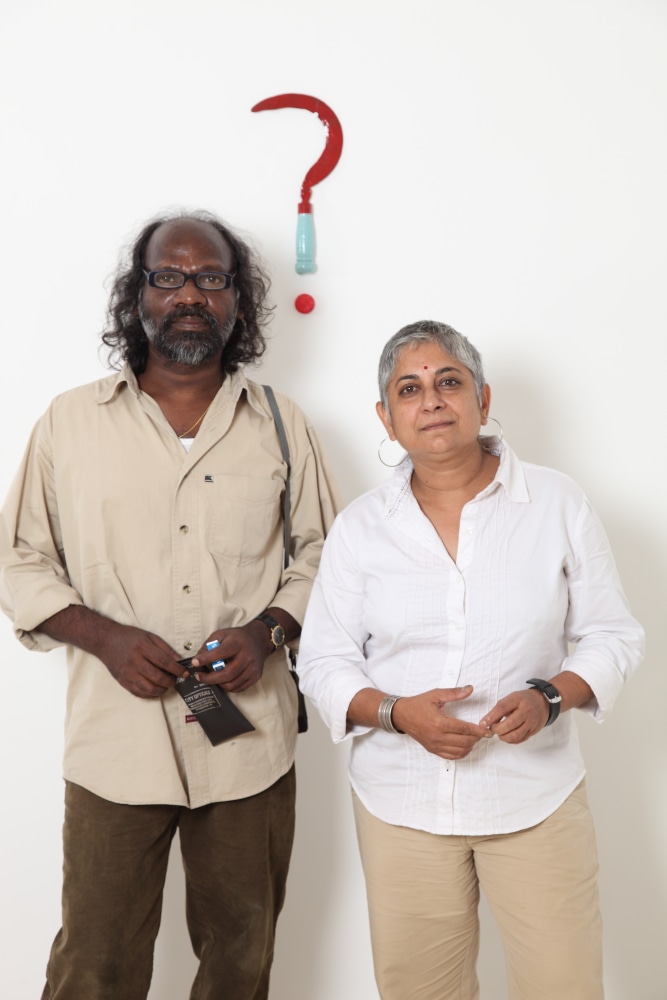
CK Rajan and Anita Dube
seekrajan
CK Rajan: A Selected Retrospective
Curated by Grant Watson
January 12 – March 9, 2023
I first saw C.K. Rajan’s work in 2006 during a visit to the home of artist Anita Dube. I was doing some research on the Kerala Radical Group, of which Rajan and Dube were both members, and she brought out a pile of fifty or so of his collages for us to look at. The Kerala Radicals was an artist collective, which came together briefly in the 1980s to challenge perceived conservatism in the Indian art world of that time using a strong left-wing polemic. Dube described how, following the death of its leader K.P. Krishnakumar the group imploded and dispersed, and how Rajan had moved to Hyderabad where he’d enrolled in a master’s programme. Here he continued producing work including these collages, away from the Radicals, away from India’s major art centres, and mostly away from the spotlight of critical attention. As I was doing research for documenta 12 (2007) some of the collages went on to be part of that exhibition where they received a measure of international visibility, and in recent years there has been a steady flow of interest in Rajan’s practice. Material produced since the late 1980s has mostly been small-scale, often sequential bodies of works, which can be organised into distinct phases, with assumably long gaps. I am assuming such gaps in making because some works are precisely dated, some are dated in terms of a timeframe of several years, while others are not dated at all. Out of these I want to consider Rajan’s cigarette-packet paintings from 1989-1990, still life paintings from 1991, collages made between 1992 and 1996, sculptural works from 2010, and a series of small paintings made in 2013.
It begins as follows: A dialectic situation arises in the cultural arena. A group of artists consciously reject the practices of the “mainstream” and mobilise into a radical new-left collective to search for a pedagogy of art; an alternative “pedagogy of practice”
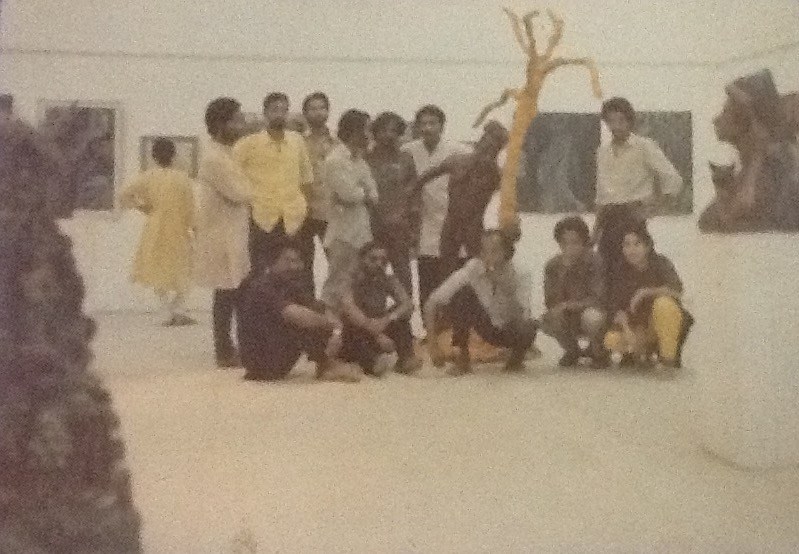
The Kerala Radical Group, 1987
The Kerala Radical Group of Painters and Sculptors
According to Dube, the exhibition Questions and Dialogues which was put on by the Kerala Radical Group at the Faculty of Fine Arts in Baroda in 1987 was received with the force of an anarchist’s bomb, and their ideas were set out in a manifesto, written by Dube on this occasion. It begins as follows: ‘A dialectic situation arises in the cultural arena. A group of artists consciously reject the practices of the “mainstream” and mobilise into a radical new-left collective to search for a pedagogy of art; an alternative “pedagogy of practice”. It goes on to critique the art world on various grounds, including its affiliations with capitalism and its nostalgia for the rural but at the same time its detachment from the experience of ordinary people. The idea of art intervening in the everyday, led to an emphasis on the workshop format for the group, such as the one which took place in a fishing village in 1985. A newspaper-cum-catalogue from 1989 for an exhibition held in Calicut sets out in a double-page spread an idea of the radical group’s aesthetic which seems quite consistent. There is an emphasis on portraiture and the figure in both painting and sculpture that uses an expressionist style to depict its working-class subjects. More inventive are the experimental temporary installations made by Krishnakumar as part of these workshops, and now existing only in documentation, that use materials including, fiberglass, chicken wire, resin coated fabrics and paint. I mention this history here, because Rajan’s subsequent works emerge from it and this colours my reading of it, and a sense perhaps that the explosive energy of the group continued to burn like a slow fuse in his work in the following decades.
There is an emphasis on portraiture and the figure in both painting and sculpture that uses an expressionist style to depict its working-class subjects
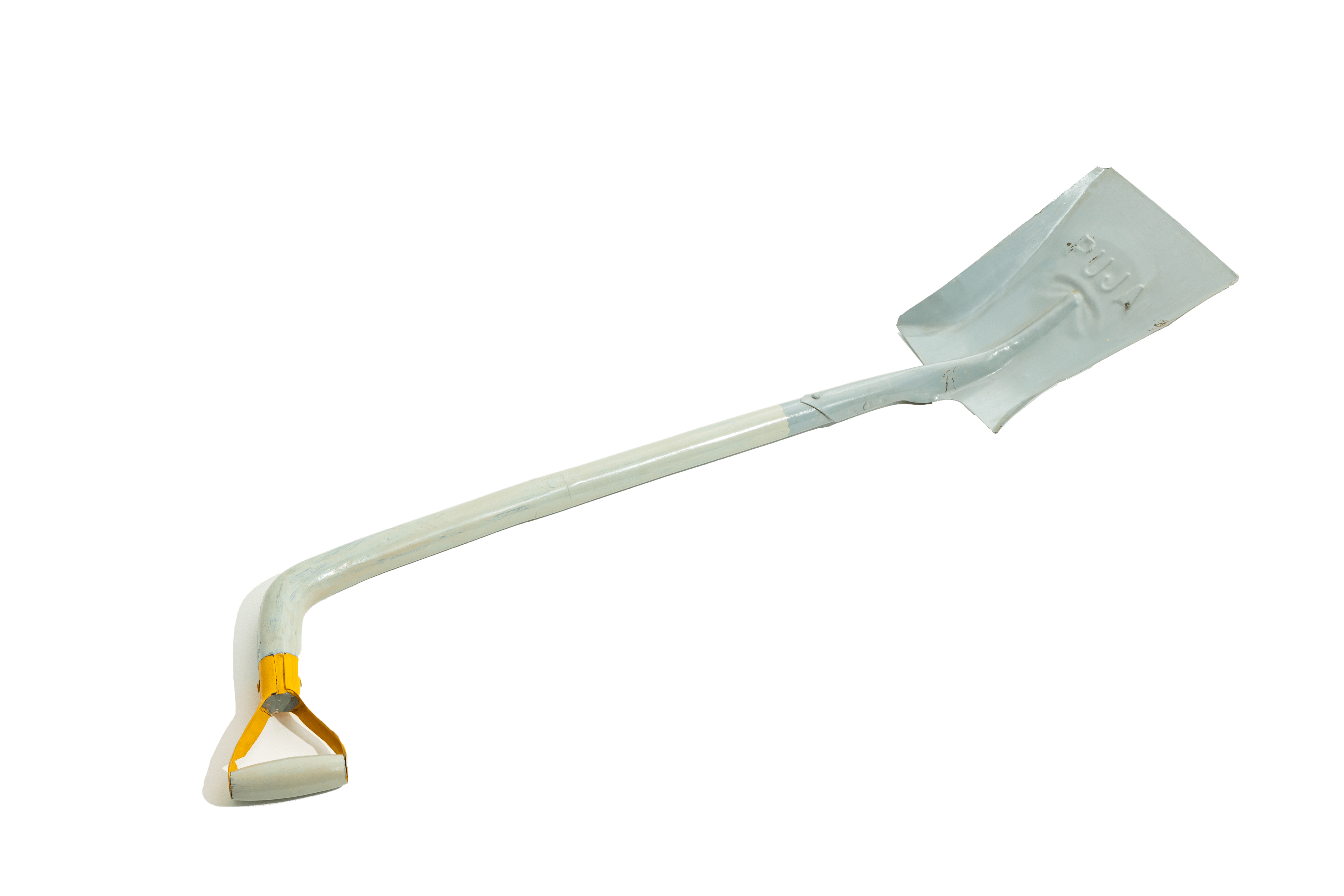
Guest Faculty from Third Reich
2010
Wood and iron
27.1 x 126 cm / 10.6 x 49.6 in
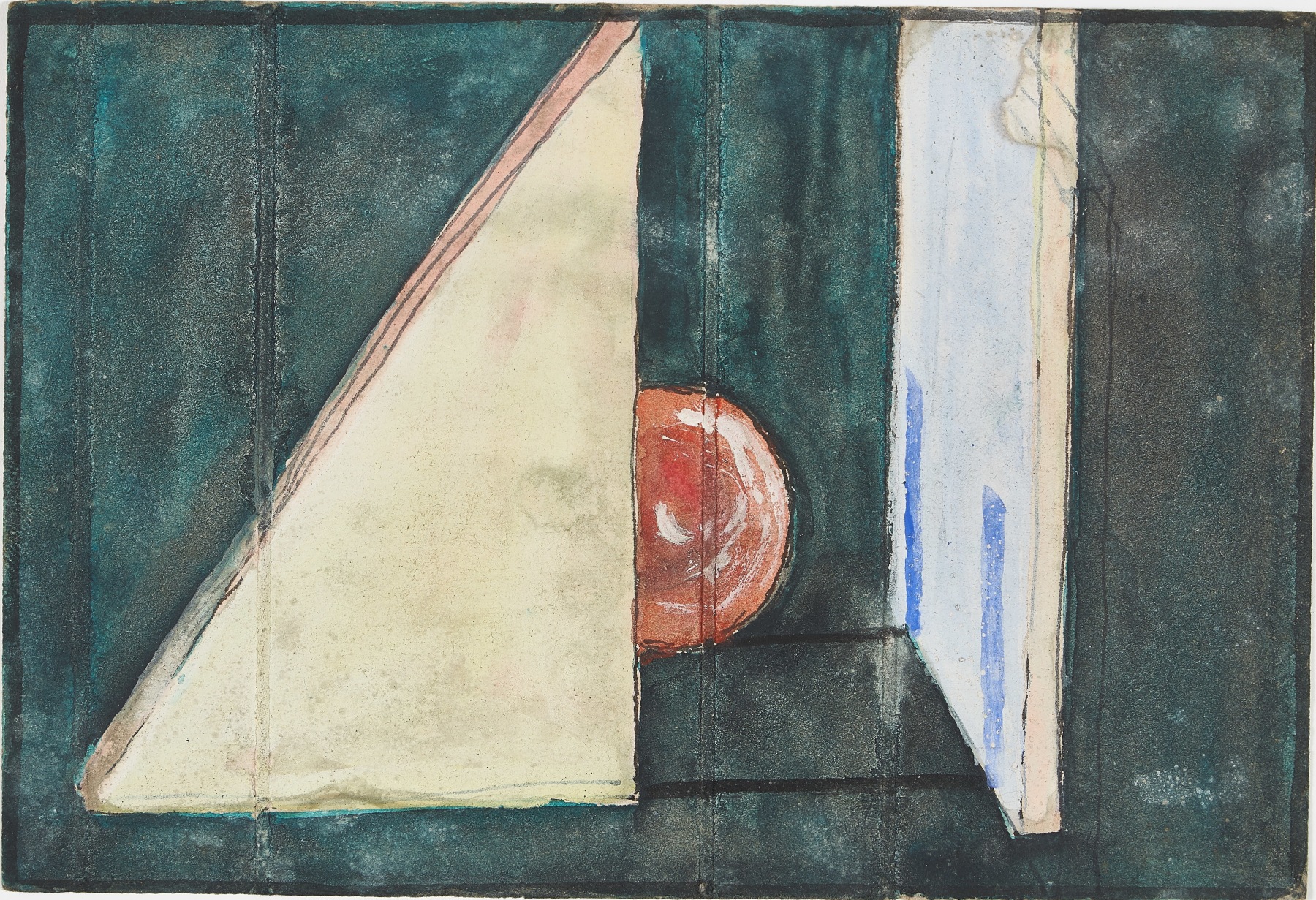
In Search of Utopia
1989-90
India ink on reverse of cigarette pack
7.6 x 12.7 cm / 3 x 5 in
In Search of Utopia (1989 – 1990)
A series of paintings made on the inside of a cigarette-packet during the artist’s last year living in Baroda and the first year of his move to Hyderabad seem like an attempt to find an artistic language of his own outside the group. Collectively titled In Search of Utopia, they suggest a futureoriented political project, away from the fisher village and rural context favoured by the radicals, and towards something more fantastical. These tiny paintings with their architectural structures and urban spaces recall constructivism as a strand of radical modernist art. They are pocket-sized utopias defined by geometric shapes – triangles, rectangles, circles, and ellipses – painted in monochrome. They recall stadiums, stage sets or complex astronomical observatories, empty of life apart from single matchstick figures. The material quality of these works, the fact of their being painted on cigarette packets, points to a modesty of scale and means, which will become a hallmark of Rajan’s practice going forward – which delights in the possibility of everyday things being transformed into art, through a sleight of hand.
They are pocket-sized utopias defined by geometric shapes – triangles, rectangles, circles, and ellipses – painted in monochrome
The title of the works, Survivors, is a puzzle. Does it refer to the life of the objects themselves, the biography of things so to speak, from production to disposal and in between their survival as depicted by the artist on the page?
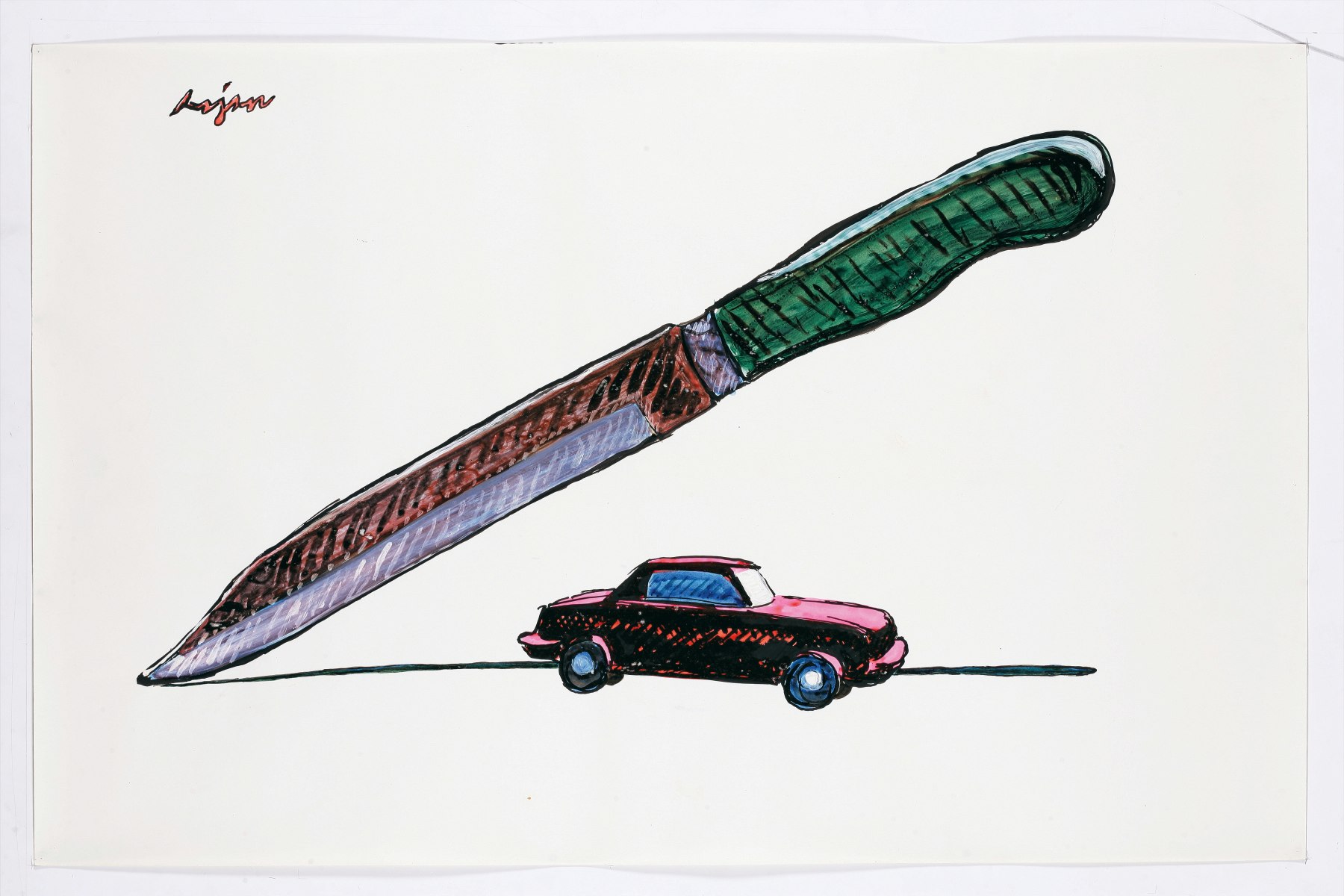
Survivors (1991)
Survivors, is a group of still life paintings in Indian ink on imperial-sized sheets of paper, painted from the arrangement of mundane objects in the artist’s studio, including fruit and vegetables, bottles and kitchen implements, tools such as pliers, shaving equipment, tins, bricks, and toy cars. If still life painting is often read as allegorical, for example denoting plenitude or human folly, what do these paintings signify? While Rajan has a knowledge of European still life paintings from the sixteenth and seventeenth centuries, here the approach is more closely related to Pop Art, being reminiscent of Andy Warhol’s Onion from Campbell’s Soup I (1968) or Claes Oldenburg’s pizza sculptures. They also recall drawings by K.P. Krishnakumar made during his time at Kala Bhavan, Santiniketan in the early 1980s, using Indian ink on paper, in which elements from his studio both real and imagined, are reconfigured to surreal effect in the style of cartoons. Rajan’s paintings in this series are elegant, menacing, ambiguous and comic. The objects convene in an atmosphere of potential violence – an overhanging knife, drawn pliers and a brick, recall the popular game ‘rock, paper, scissors’ in which these elements are held in tension. But the title of the works, Survivors, is a puzzle. Does it refer to the life of the objects themselves, the biography of things so to speak, from production to disposal and in between their survival as depicted by the artist on the page? Or are the objects witnesses to human life, props in a domestic drama, somehow referring to the artist’s own biography?
The objects convene in an atmosphere of potential violence – an overhanging knife, drawn pliers and a brick, recall the popular game ‘rock, paper, scissors’ in which these elements are held in tension
Beyond insurgencies and counterinsurgencies, the violence comes in the staging of the sometimes brutal dislocations and estrangements that emerge in the urban context, through the distortions brought about by a new kind of economy – including the clash between wealth and poverty and the array of products aimed at a burgeoning middle class that intersect strangely with traditional ways of life in the visual field
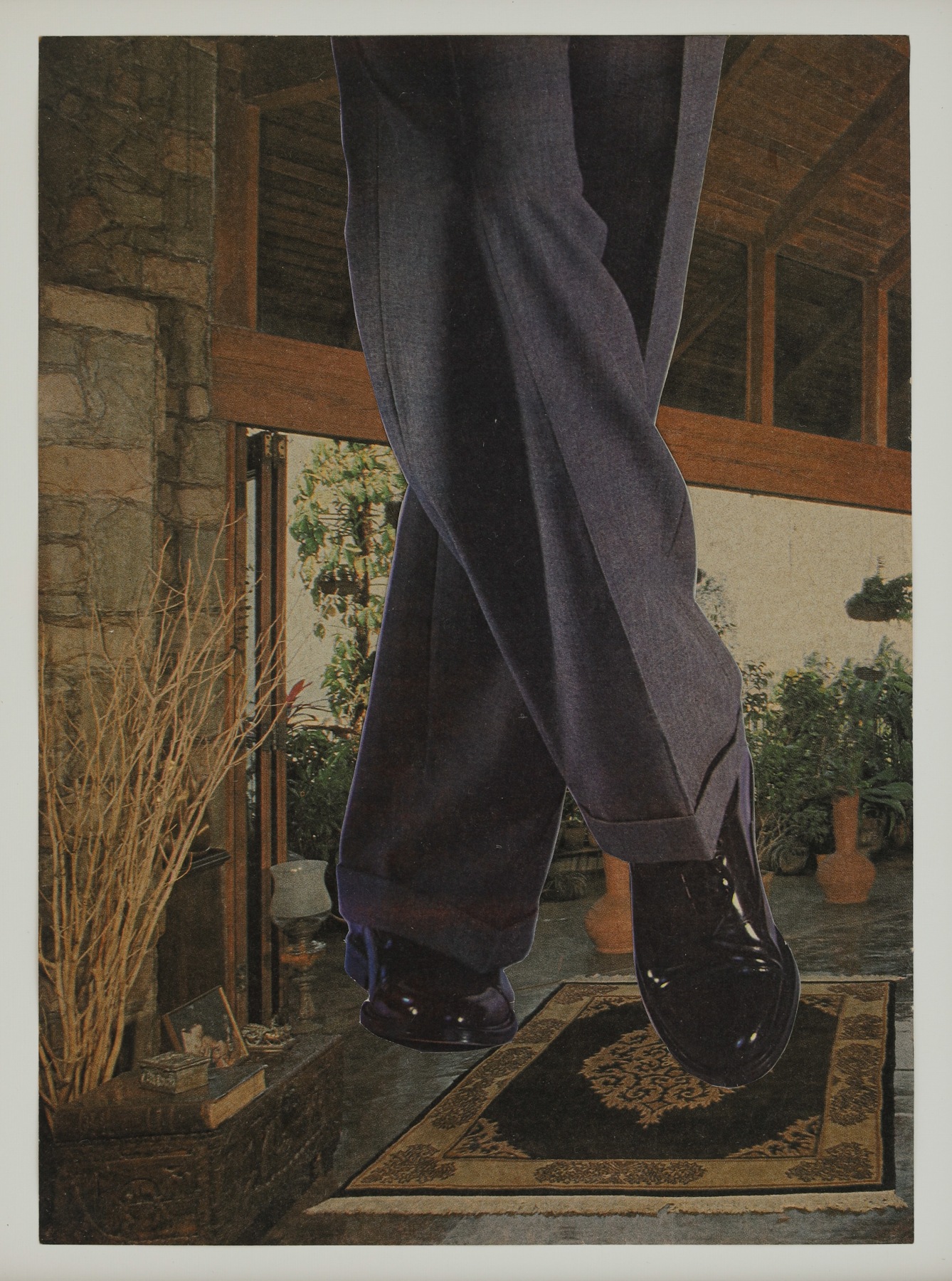
From the series Mild Terrors II
1991–96
Collage from print media on A4 sheet
Mild Terrors (1992 – 1996)
Collages made between 1992 and 1996 stand out in the artist’s oeuvre. The shift to a new technique seems to liberate something and a myriad of works are produced with fluidity and speed. Made by using cuttings from papers and magazines, this series of work continues with the appropriation and transformation of found materials evident in the cigarette-packet paintings. Making do with print material, scissors and glue, the artist has produced jewel-like compositions that are hard-edged, witty, and beautiful. The fact that they are equally legible and hard to interpret, has something to do with the nature of their creation, which seems to have involved a mixture of intuition and intention. Visually, they are surreal in their distortion of scale and juxtaposition of incongruous elements and their atmosphere of a fever dream. As with Survivors, there is something here about the proximity of violence, recalling Martha Rosler’s Bringing the War Home: House Beautiful collages from 1967–72, although the context of Mild Terrors is specifically Indian. The early 90s were the years in which the country began to liberalise, opening its to markets to global capital, and these collages register some of the impacts through the culture of popular print media. Beyond insurgencies and counterinsurgencies, the violence comes in the staging of the sometimes brutal dislocations and estrangements that emerge in the urban context, through the distortions brought about by a new kind of economy – including the clash between wealth and poverty and the array of products aimed at a burgeoning middle class that intersect strangely with traditional ways of life in the visual field. A bejewelled hand dangles above a heap of rubble and a blown-out car, as if a bomb has just gone off. Cereal products float in a giant plastic bowl above a mosque and there is a repeated fascination with the interiors of the upper-middleclass as seen through advertising. These last appear as highly constructed and staged environments, something heightened by the insertion of outsized elements like a fridge sized bottle top or spectacles the size of bicycle wheels suspended beneath a chandelier. If there is a critique going on, there is also perhaps some delight in the surprise, the energy, and ingenuity that is an integral part of consumer culture. The female figure appears repeatedly, and I see its presence as affirmative. A recurring motif being women and architecture or women as architecture, with arms and legs emerging Godzilla-like from buildings or women running or dancing while wearing buildings like garments or hats – the Azadi Monument and the eleventh century Brihadeeswara Temple in Tamil Nadu, India being two examples of monuments that appear in this way. Rescaled, these women become giants, like the images pasted onto billboards along the highway, but here they can be seen to appear in the public domain not simply as spectacular commodity but bestowed with a kind of mythic and superhuman agency.
If there is a critique going on, there is also perhaps some delight in the surprise, the energy, and ingenuity that is an integral part of consumer culture
Visually, they are surreal in their distortion of scale and juxtaposition of incongruous elements and their atmosphere of a fever dream
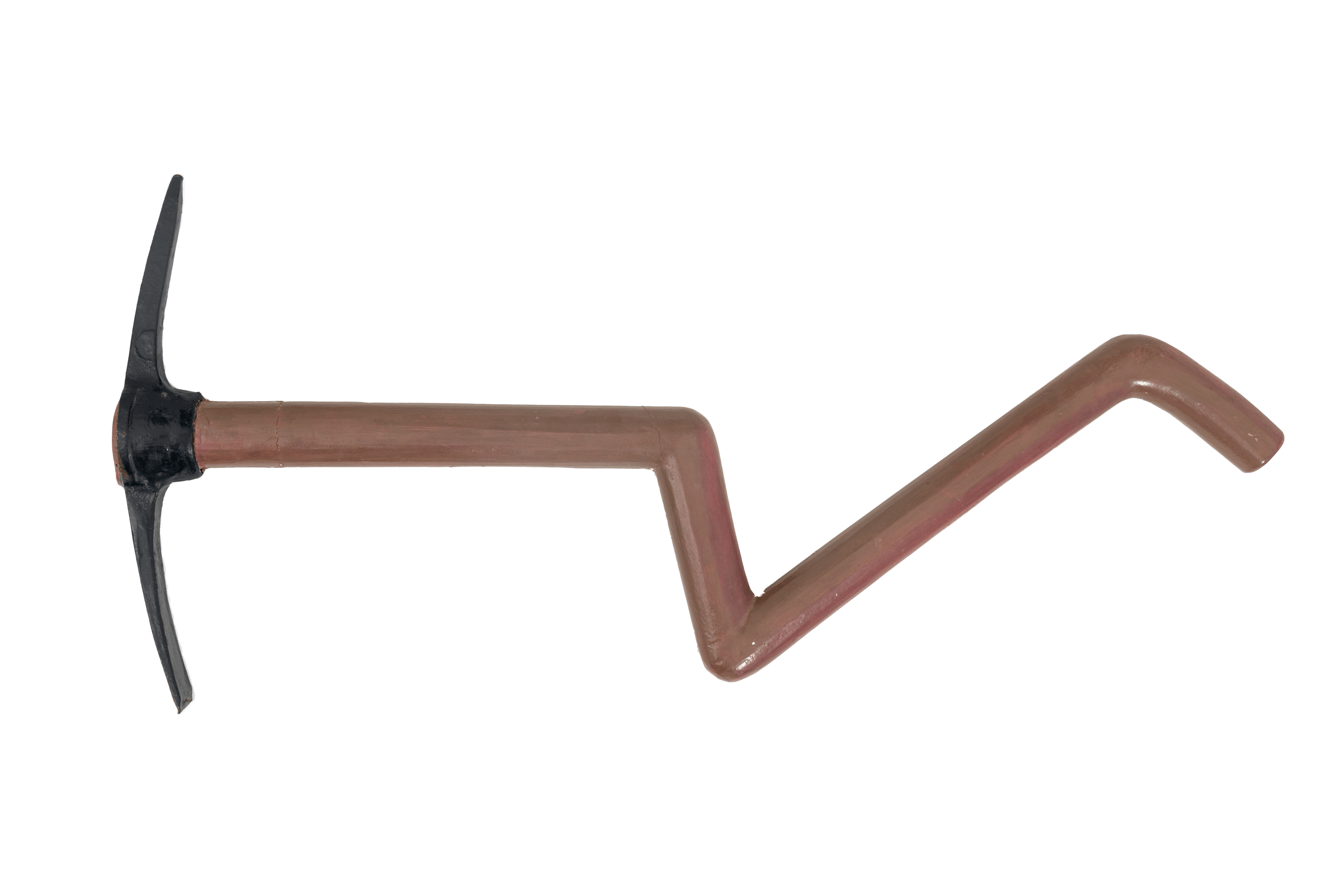
Corporate Pickaxe
2010
Wood and iron
46.5 x 100 cm / 18.3 x 39.3 in
Mad Furniture and Psychic Objects (2010)
Jumping a decade, Rajan’s sculptures from 2010 appear as anomalous. Nevertheless, they share certain characteristics with his paintings and collages, playing games with scale, or the unexpected appearance and/or distortion of everyday objects, or with political metaphor. In one, the blade of an axe, its head painted red with a yellow line along its tip is mounted in a green handle. But the handle refuses to remain straight and so spirals around the blade, transforming itself into something resembling a mosquito coil. In another, an old-fashioned ceiling fan is hung low, its blades extending into alarming protuberances like drawn swords, and in a third, a sickle laid flat on the ground has its blade painted red and its handle blue, and with the whole transformed into a question mark. With their bold use of colour and distorted shapes these are comic objects but their choice, including a pickaxe, a scythe, a hammer, a bucket and a broom give them social meaning. These are the tools used by workers with class associations relating to subsistence agriculture, construction work and domestic service, but holding the power to shapeshift and ask questions.
With their bold use of colour and distorted shapes these are comic objects but their choice, including a pickaxe, a scythe, a hammer, a bucket and a broom give them social meaning
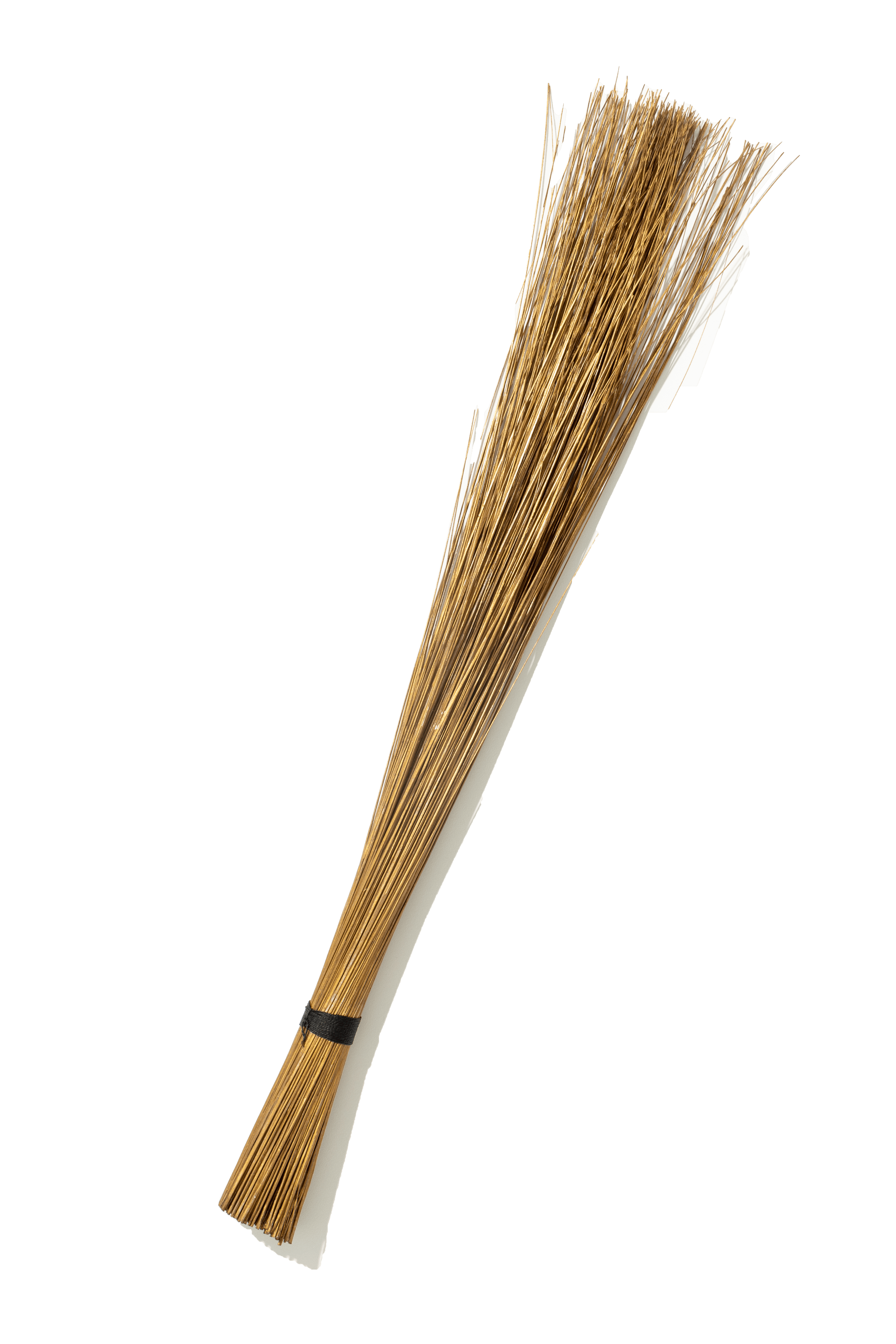
Golden Broom
2010
Gold paint on broom
7 x 100 cm / 2.7 x 39.3 in
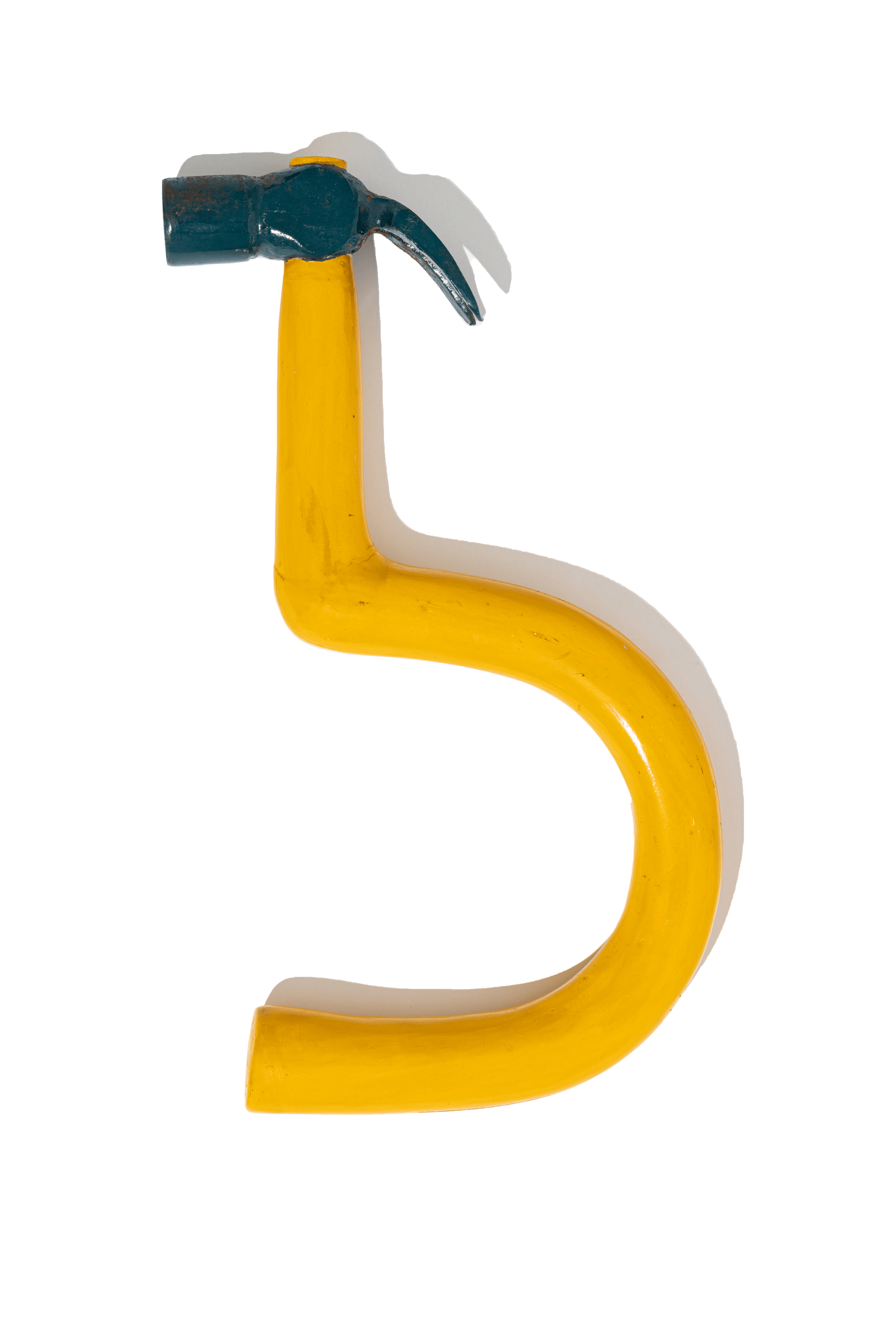
Enfant Terrible
2010
Wood, iron, oil paint
30 x 16 cm / 11.81 x 6.3 in
These are the tools used by workers with class associations relating to subsistence agriculture, construction work and domestic service, but holding the power to shapeshift and ask questions
More recently in 2017, the artist produced a series of small sculptures. Loosely moulded in clay, these were then cast in bronze, and hand-painted.
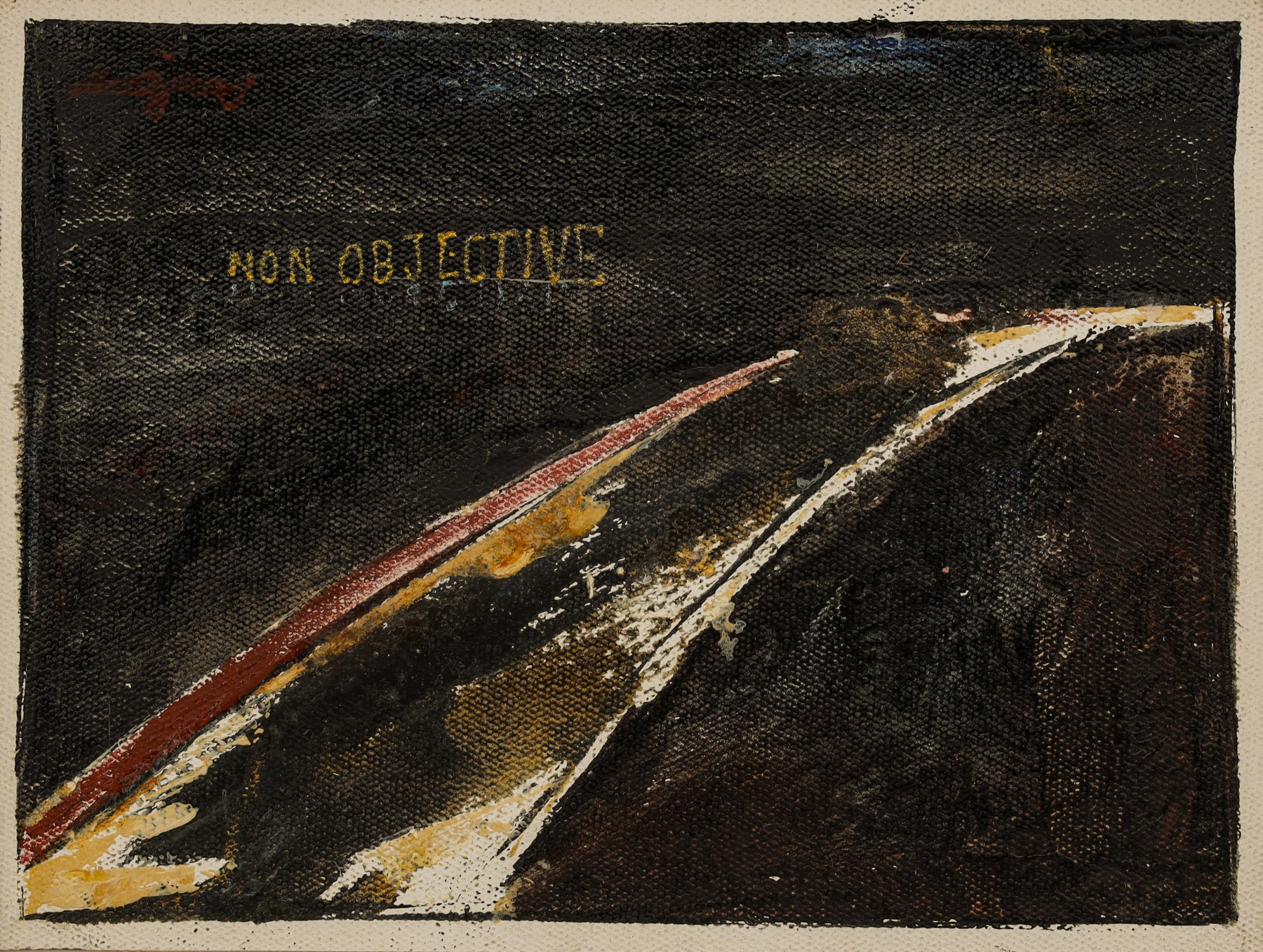
Untitled II
2013—14
Oil on canvas
12.5 x 17 cm / 4.9 x 6.7 in
Recent Paintings (2013)
In 2013 after an apparent hiatus, Rajan produced a series of eighty-one small paintings on unstitched canvas, which hark back to his cigarette-packet works from the early 1990s. Like these, they are dark in terms of mood and colour palette, but here depicting an expanded repertoire of scenarios, concepts, narratives and jokes. Like the collages, they appear to have been made in rapid succession, suggesting that they should be viewed serially. Using thick brushstrokes and washes to create grounds, the paint is mixed into muted or glowering colour combinations, which in pictorial terms often shifts these images towards night or twilight. While the grounds appear abstract, the paintings cohere around a few cryptic interventions – a figure, a plane, a window, a horizon line or a word, for example – that while rendered as a dab or a brushstroke, bring narratives into play. In these fragmentary marks, the viewer is given clues about a storyline, but as significant as this is, the atmosphere of the painting, which can be of threat, intrigue, isolation or pleasure, is of equal importance. A political subtext breaks out here and there in the use of words like ‘profit’ or ‘greed’ which are freighted with meaning but at the same time these words can deflate, and the sentiment might just as easily be – ‘So what?’ Figures appear to be fleeing in vehicles or on foot across dark landscapes. Machines in the air go in pursuit, or else malfunction. The human presence is diminutive, swallowed up by landscape and the skies, which render them indistinct, although conversely this reduction in scale can appear to magnify their intensity – as pinpricks of consciousness. At times, this appears as illumination, pools of light from the windows of a house at night demarcate and extend the space of habitation, the sudden glare of headlights as a car turns a bend in the road or the blinking of a plane denote human mobility. These paintings are host to Rajan’s recurring preoccupations. One is the canon of art history but with its references rendered as ironic or counterintuitive. Hunter in the Snow (2013), which depicts two figures urinating in a raked landscape, might refer to Hunters in the Snow (1565) by Pieter Brueghel the Elder, but is dedicated instead (or as well as) to Franz Kafka. Impressionism is acknowledged in Homage to Monet (2013) and House at the edge of the Pond (2013), which echo the bucolic character of the original genre, but is mocked in Homage to Impressionists (2013) where in giant letters on the horizon like the “Hollywood” sign, you can read the words – ‘The final frontier homage to impressionism’.
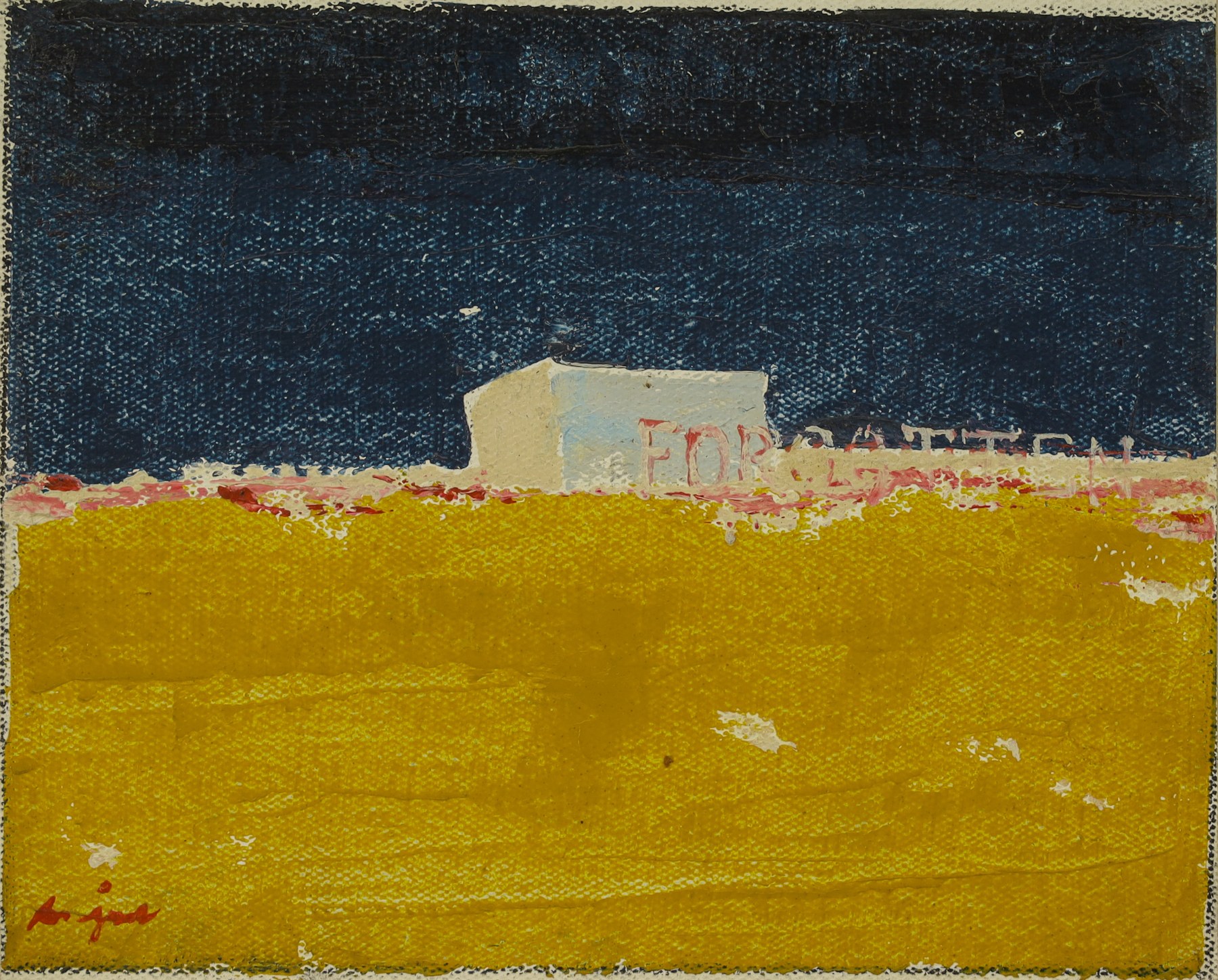
Forgotten
2013—14
Oil on canvas
12.5 x 16 cm / 4.9 x 6.3 in

Installation view, Galerie Mirchandani + Steinruecke
While the grounds appear abstract, the paintings cohere around a few cryptic interventions – a figure, a plane, a window, a horizon line or a word, for example – that while rendered as a dab or a brushstroke, bring narratives into play
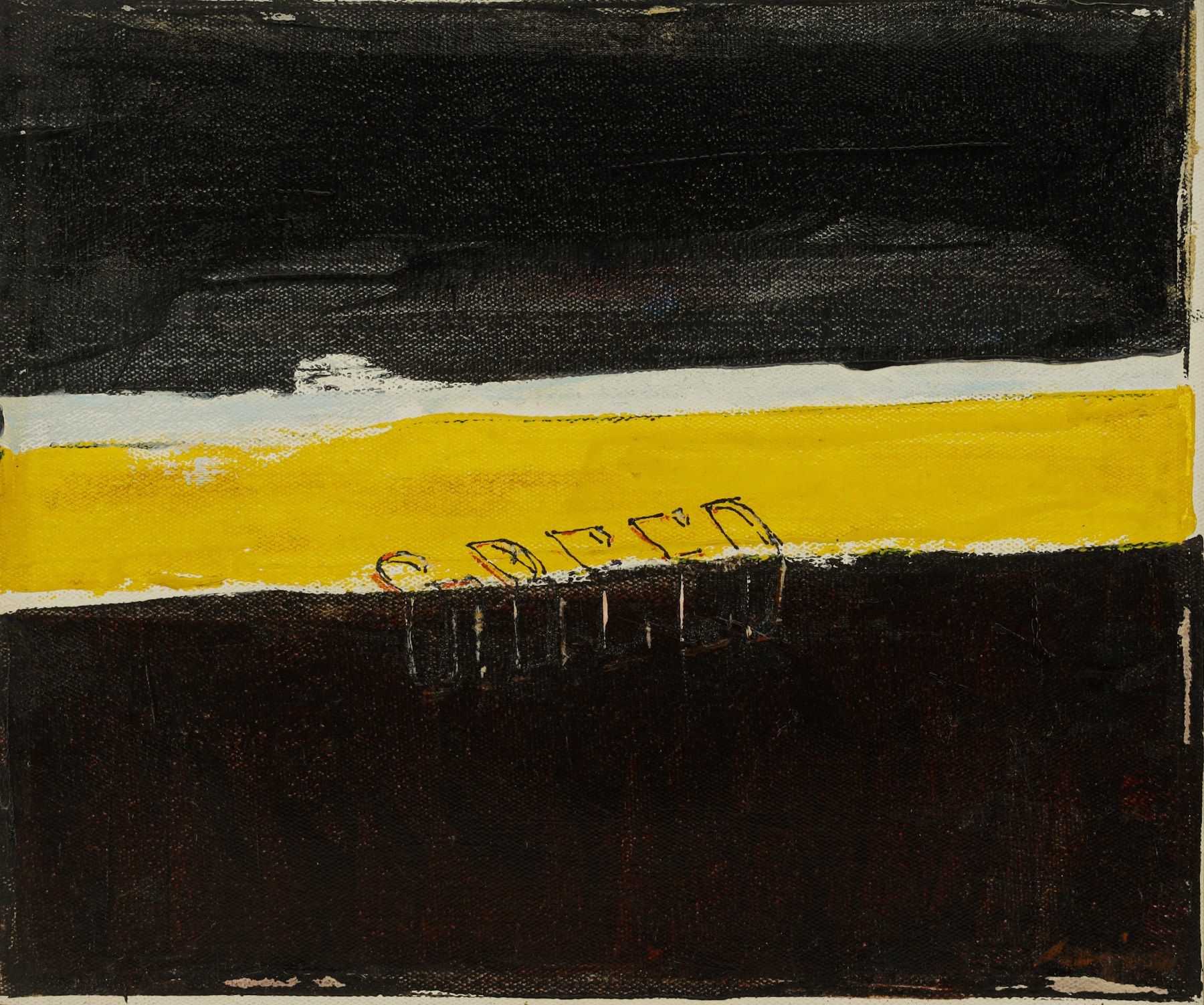
Post Capitalist Slogan
2013—14
Oil on canvas
21 x 25 cm / 8.3 x 9.8 in
Classified: For Your Eyes Only (2014)
The titles of Rajan’s paintings are leading and can be an important part of their interpretation. The name of the exhibition where they were brought together for the first time in 2014 – Classified: For Your Eyes Only – is an amusing tease but one that says something about the artist’s game, to conceal and reveal, of suggestion and subversion. In the work Password a bird flies past, tweeting what looks like a string of letters, numbers and symbols of the kind used to verify that a human is not a robot online – or is this tweet instead a word, written in an unknown script? It isn’t clear. And in general, we sense that the artist is saying something significant, only we can’t quite put our finger on it. This specific image seems to mock the imperative to name and resolve the question of what things signify precisely. Looking at these paintings it struck me that there is also the desire, consciously or not, to express feelings. I would interpret these feelings as being, amongst other things, those of anger, tenderness, anxiety, isolation, ennui, excitement, poetry, desperation, pleasure, euphoria, displacement, enchantment, and melancholy. Alongside their black comedy, clever quoting and pictorial invention, the way that they touch on an emotional level is something unexpected, and it is what makes them shine.
Alongside their black comedy, clever quoting and pictorial invention, the way that they touch on an emotional level is something unexpected, and it is what makes them shine